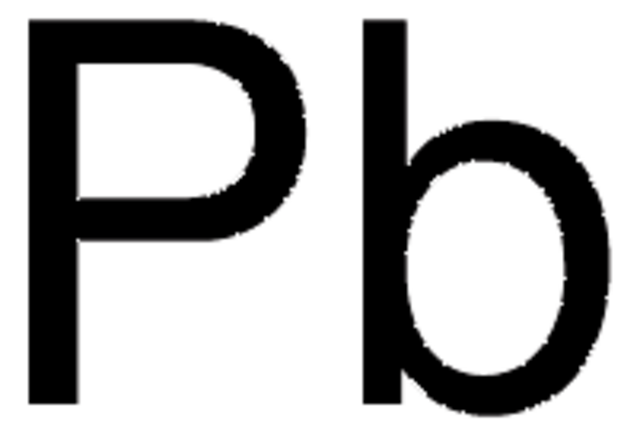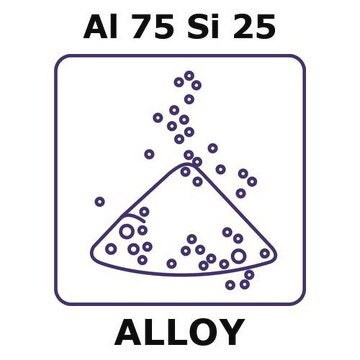Wichtige Dokumente
GF45831236
Beryllium
wire reel, 0.1m, diameter 0.5mm, annealed and clean, 99%
Synonym(e):
Beryllium
About This Item
Empfohlene Produkte
Assay
99%
Form
wire
Selbstzündungstemp.
1198 °F
Hersteller/Markenname
Goodfellow 458-312-36
Widerstandsfähigkeit
4.46 μΩ-cm, 20°C
L × Durchm.
0.1 m × 0.5 mm
bp
2970 °C (lit.)
mp (Schmelzpunkt)
1278 °C (lit.)
Dichte
1.85 g/mL at 25 °C (lit.)
SMILES String
[Be]
InChI
1S/Be
InChIKey
ATBAMAFKBVZNFJ-UHFFFAOYSA-N
Suchen Sie nach ähnlichen Produkten? Aufrufen Leitfaden zum Produktvergleich
Allgemeine Beschreibung
Rechtliche Hinweise
Signalwort
Danger
Gefahreneinstufungen
Acute Tox. 3 Oral - Carc. 1B - Eye Irrit. 2 - Skin Irrit. 2 - Skin Sens. 1 - STOT RE 1
Lagerklassenschlüssel
6.1C - Combustible acute toxic Cat.3 / toxic compounds or compounds which causing chronic effects
WGK
WGK 3
Flammpunkt (°F)
Not applicable
Flammpunkt (°C)
Not applicable
Hier finden Sie alle aktuellen Versionen:
Analysenzertifikate (COA)
Leider sind derzeit keine COAs für dieses Produkt online verfügbar.
Wenn Sie Hilfe benötigen, wenden Sie sich bitte an Kundensupport
Besitzen Sie dieses Produkt bereits?
In der Dokumentenbibliothek finden Sie die Dokumentation zu den Produkten, die Sie kürzlich erworben haben.
Unser Team von Wissenschaftlern verfügt über Erfahrung in allen Forschungsbereichen einschließlich Life Science, Materialwissenschaften, chemischer Synthese, Chromatographie, Analytik und vielen mehr..
Setzen Sie sich mit dem technischen Dienst in Verbindung.








